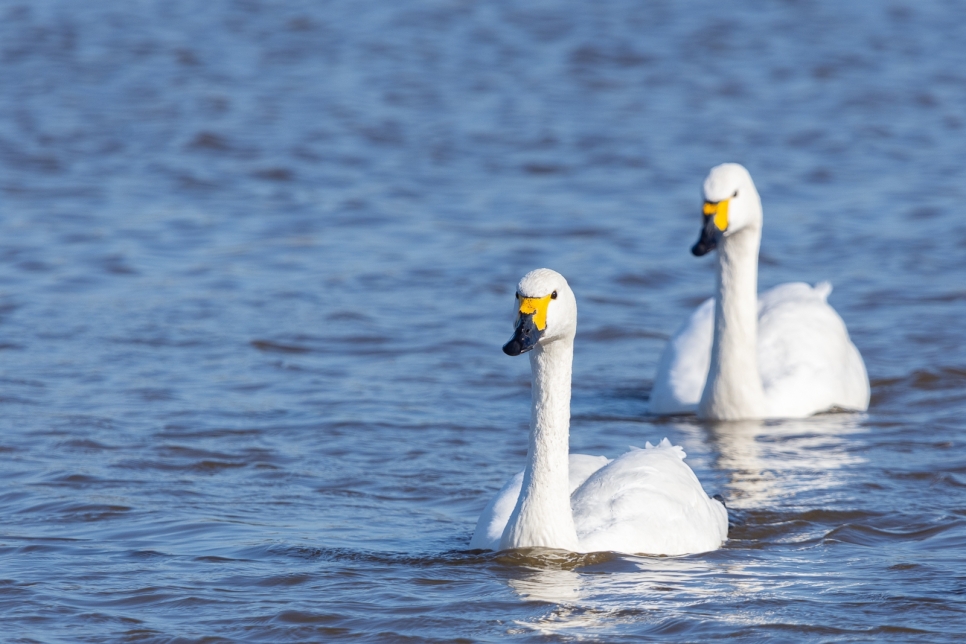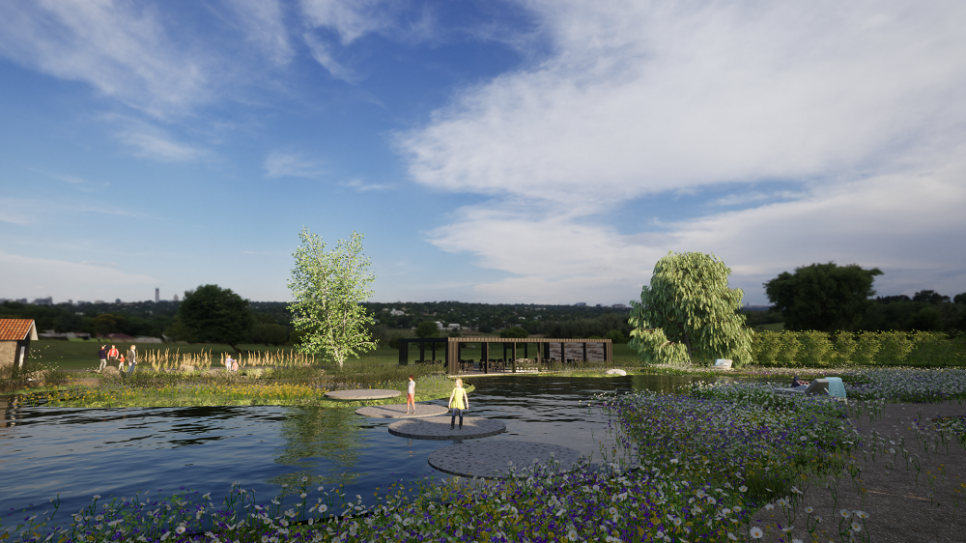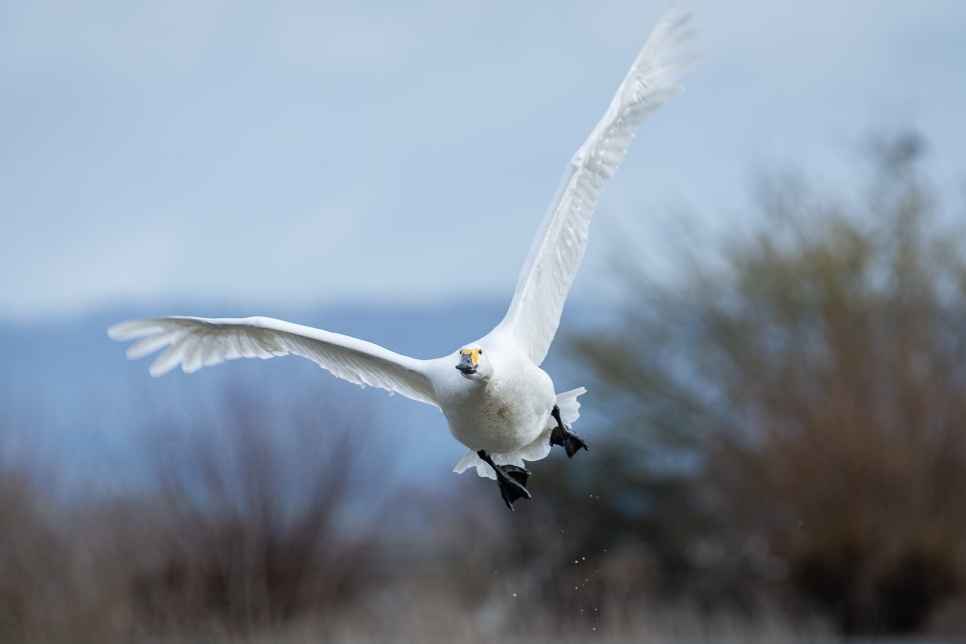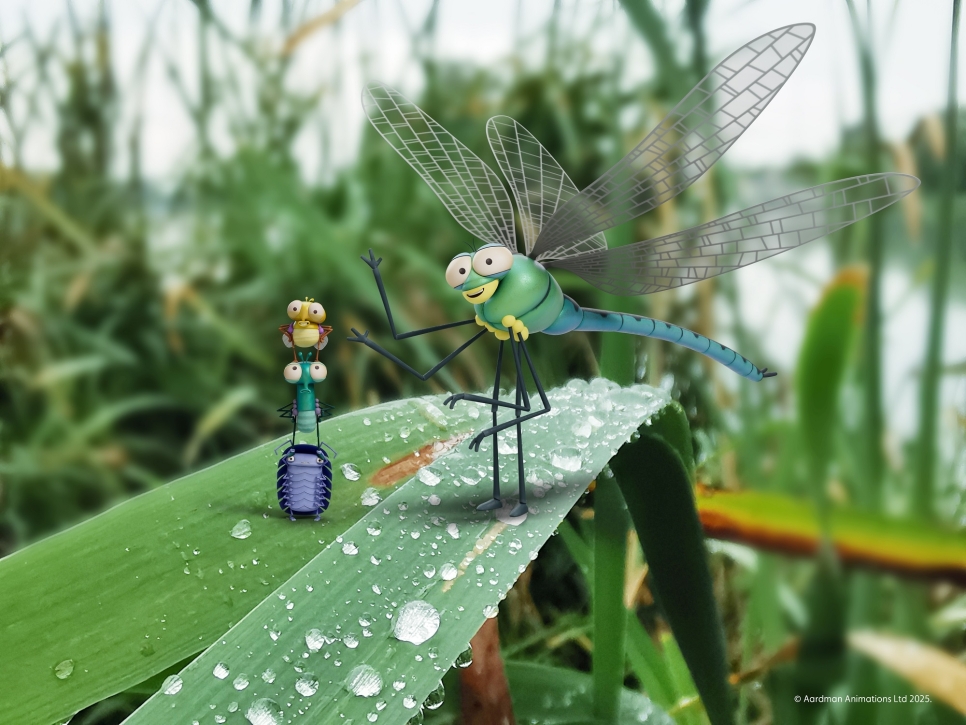Snow brings Bewick’s swanfall to Slimbridge
With snow and frost came the annual ‘swanfall’ at Slimbridge, with large numbers of Bewick’s swans arriving.
With snow and frost came the annual ‘swanfall’ at Slimbridge, with large numbers of Bewick’s swans arriving at the reserve.
In early December Slimbridge had 45 Bewick’s swans on site and the first ‘swanfall’ brought numbers up to 70 by 15 December. As the temperatures dropped to minus 10 degrees, the total number of Bewick’s rose to 105. This includes 25 yearling Bewick’s swans, and amongst these young Bewick’s are two individuals named Knockin’ & Ringin’, who were named to celebrate the support of People's Postcode Lottery who've raised over £3.8M for WWT's work.
The arrival of the Bewick’s swans is spurred on by the onset of colder weather on the continent, north-easterly winds, and their need for access to ice-free wetlands. The appearance of so many swans in one go is called a ‘swanfall’, and marks the final stage of their epic 3,500km journey from Arctic Russia to the comparatively warmer weather of the UK.
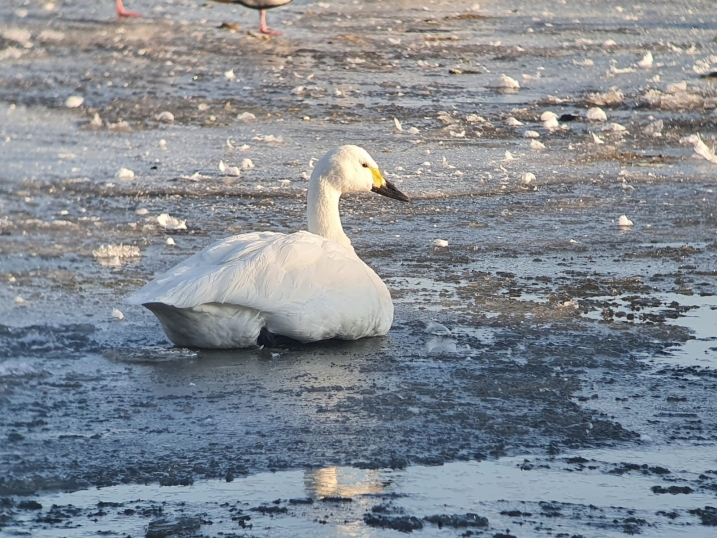
As WWT celebrated its 76th birthday last month - on 10th November, the first Bewick’s swans, ‘Fortune Two’ and ‘Combo’ arrived. A timely reminder of the work of WWT founder Sir Peter Scott, who dedicated much of his time watching and studying Bewick’s swans. He was one of the first people to notice that each bird has a unique bill pattern making it possible to identify individuals. The WWT conservation team who are based at Slimbridge have been using this technique to identify and record individual Bewick’s swans for more than 50 years. Over that time, the comings and goings of individuals and family dynasties has led to over 10,000 swans being recorded, one of the longest single species study that has been researched.
New families to arrive during the latest swanfall included 'Orkney Reid' with mate 'Doodled', with a brood of four cygnets, this pair also had four cygnets last winter. New family 'Turlach' with mate 'Tramore' and their three cygnets - this pair also had four cygnets last winter. Plus another new family, 'Ananas', with a new mate and their three cygnets. Bewick’s usually have two or three cygnets per family so these are unusually large broods for the species. The number of cygnets at Slimbridge this year looks encouraging, however the WWT conservation team won’t know how successful the breeding season has been until the flyway results have been compiled.
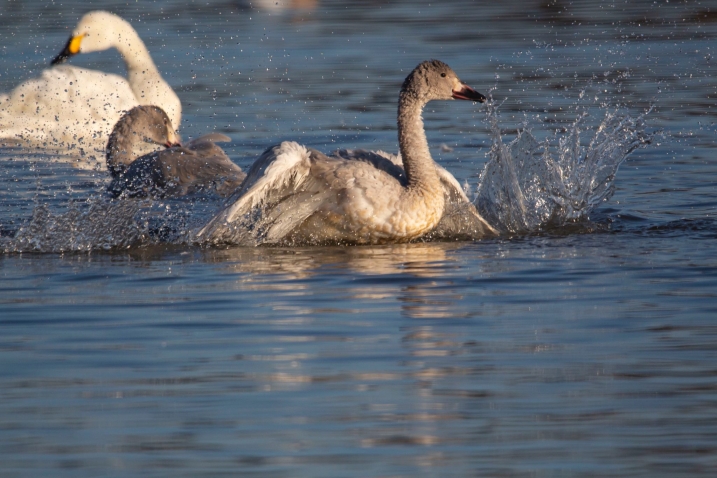
Other unique individuals to have arrived this year include 'Winkey', the oldest swan on site currently at 26 years old, and a yearling named 'Bendy' - named due to their distinctive bendy neck!
Bewick’s are small white swans with a black and yellow bill. Every winter they return to the UK to escape the Arctic winters of Russia, travelling an epic 3,500km journey. The arrival of the Bewick’s is spurred on by the onset of colder weather on the continent, north-easterly winds, and their need for access to ice-free wetlands.
Bewick’s tend to be long-lived, but usually only two or three cygnets per family make it to their wintering sites in northwest Europe, and less than half of the population makes a breeding attempt each year. Numbers decreased from around 29,000 in 1995 to approximately 20,000 recorded in 2015, and conservationists are still trying to confirm the reasons for the decline. Research suggests that the swans have suffered a series of poor breeding years and this is likely to be contributing at least in part to their decline. They also still face other threats along their migratory route like illegal hunting and lead poisoning.
Visitors to Slimbridge can experience close up views of the Bewick’s swans, with excellent views at their daily commentated Wild Bird Feeds, from the Peng Observatory at 4pm.
Follow our Bewick's Blog to see which other individuals have come to spend their winter at Slimbridge.
